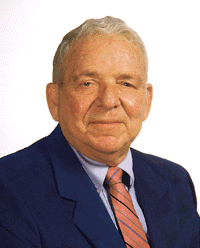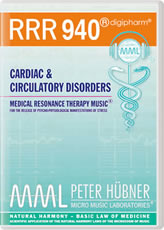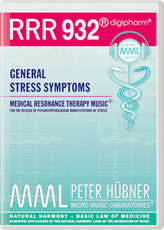| FREIE UNIVERSITÄT |
| SCIENTIFICALLY INTRODUCING UNIVERSALITY TO THE UNIVERSITY |

(The American Institute of Stress)
STRESS – The Epidemic
of Modern Society
Stress + Heart Disease

Prof. Dr. med.
Paul J. Rosch
Clinical Professor of
Medicine and Psychiatry,
New York Medical College
Adjunct Clinical Professor
of Medicine in Psychiatry
University of Maryland
School of Medicine
Leading stress expert
of our time
and official successor
of Prof. Dr. Hans Selye –
the founder of the
stress research
What’s The
Connection –
What Can You Do
About It?
Dear Patient:
Many of you have probably read or heard about the harmful effects
of emotional stress on the cardiovascular system, and physicians frequently warn their heart patients to
be careful to avoid or reduce this as much as possible.
I would like to explain why this is so important, and how you
can learn to minimize stress related damage.
The close relationship between stressful
emotions and heart disease has been recognized since antiquity.
In fact, the ancient Greeks and other early cultures believed
that the heart, rather than the brain, was the seat of emotions. We still
describe people as being “broken hearted” following
some severely stressful event, such as the loss of a loved one. People
who are generous have a “heart of gold”, or are “good
hearted”, while “heart of stone” and “cold hearted” describe
opposite temperaments. Being brave is to be “stout
hearted”, and if you are timid, you are “faint of heart”.
The heart was viewed as being the essence of life. And, if you want
to “get at the heart” of anything from an argument
or an apple, you go to its “core”, which comes from cor, the
Latin word for heart.
One of the problems in studying the relationship between
stressful emotions and the heart, is the difficulty scientists
have in defining stress, much less being able to measure
it accurately.
After all, exactly what is stress?
Although it had been used in physics for hundreds of years,
the term as it is commonly used today, was essentially
coined only 60 years ago, by Hans Selye, a brilliant Canadian
researcher.
He used it to describe a series of responses in laboratory
animals subjected to severely disturbing physical
or emotional threats, which, if persistent, produced ulcers,
heart attacks, hypertension, arthritis, kidney damage,
and other diseases. Selye reasoned that if stress could do this
in his experimental animals, then perhaps it played
a similar role in patients suffering from these disorders,
which he referred to as „Diseases of Adaptation”.
While his research was initially of interest primarily
to other basic scientists, Selye’s theory and
concepts steadily spread into all branches of clinical
medicine, and „stress” eventually became a
popular buzz word.
A 1983 cover story in TIME magazine referred to stress as “The
Epidemic of the Eighties”, and numerous surveys
have shown that the problem has progressively worsened
since then. It’s difficult to get through the day without
reading or hearing something about “stress”.
Why all the sudden fuss?
After all, stress has been around since Adam and Eve were in the Garden
of Eden. Is it because there is much more stress today? Is it because
the nature of contemporary stress is somehow different,
and more dangerous? Or is it because scientific research
has increasingly confirmed the important influence
of stress in numerous diseases, and uncovered the mechanics
of actions responsible for its diverse effects
on physical and mental health? All of these are undoubtedly
ingredients. It is estimated that 75-80 percent
of all visits to primary care physicians in the U.S. are
for stress related complaints, and it is difficult to think
of any illness ranging from the common cold to cancer,
in which stress could not play a contributory role.
and it is difficult to think of any illness ranging from the common cold to cancer, in which stress could not play a contributory role.”
The major source of stress for adults stems from workplace
pressures. Four out of five American workers describe their
jobs as being “very stressful”, and the World Health
Organization recently declared that job stress has
now become a “worldwide epidemic”.
Some people use it to describe an unpleasant circumstance,
like loosing your job, while others view stress to refer to the way
such challenges make you feel (anger, fear, depression),
symptoms you experience (angina, palpitations,
stomach pain, diarrhea, headache), or even illnesses
that seem to result from this (heart attack, stroke, ulcer). Stress
is also very different for each of us.
However, stress signifies different
things to each of us.
Things that are very distressful for one individual
may be pleasurable for another, or have little significance
either way.
That can be readily illustrated by observing passengers
on a steep roller coaster ride. Some are hunched down in the back seats with
their eyes shut, jaws clenched, and white knuckled as they clutch the
retaining bar. They can’t wait for the ride in the torture
chamber to end so they can get back on solid ground and get away.
But up front are the wide-eyed, exhilarated thrill seekers,
yelling, and relishing every steep plunge, who actually
race to get on the very next ride! And in between you may find a few with
an air of indifference or nonchalance that seems to border
on boredom. So, was the roller coaster stressful? Obviously,
it’s different strokes for different folks.
The roller coaster ride is a useful analogy for several reasons.
What distinguished the passengers in the back from those
in the front was the sense of control they perceived over the event.
While neither group had any more or less control, their perceptions
and expectations were quite different. Thus, although
you can’t define stress objectively, all of our animal
and human research confirms that the sense or feeling of
being out of control is always distressful.
That’s what stress is all about.
Roller coaster rides, jobs, and people,
are not inherently stressful.
It’s often how we perceive them. As with the roller coaster, we
often create our own stress because of faulty perceptions,
and that’s something you can learn to correct. You can teach
people to move from the back of the roller coaster to the front, and nobody
can make you feel inferior without your consent.
In “The Broken Heart: The Medical Consequences of Loneliness”, Dr. James Lynch provides some compelling examples and statistics about the relationship between the stress of bereavement and loneliness with heart disease. The best validated rating scale used to measure the severity of stress places death of a spouse at the top with a value of 100, followed by loss of other important relationships like divorce (73), marital separation (65), and going to jail and death of a family member (63). Getting a traffic ticket (14) is at the bottom of this list of some 43 other stressful events. Stress levels are determined by adding up the total of how many of these have been experienced over the previous 12 months.
Thousands of scientific studies have confirmed
that the higher the score, the greater the likelihood that you will
become sick during the next six to twelve months. Widowed individuals
die at rates three to twelve times higher for all the leading causes of
death within a year or two following the loss of their mate than
married controls.
Cardiac deaths are especially high during the first six
months of bereavement. A greater risk for heart attacks has
also been demonstrated for a variety of other stressful
emotions, including depression, anxiety, fright,
hostility, and anger, especially when you keep your
anger suppressed.
|
MEDICAL RESONANCE THERAPY MUSIC® Medical Music Preparations on CD |
|||
|

